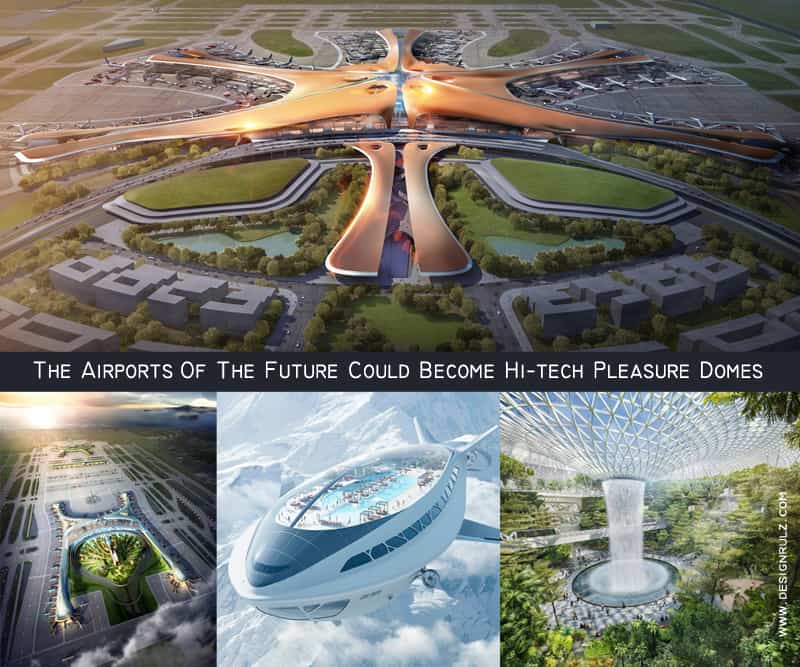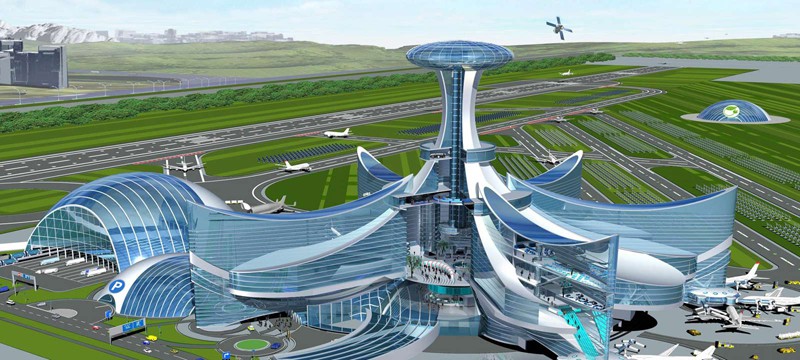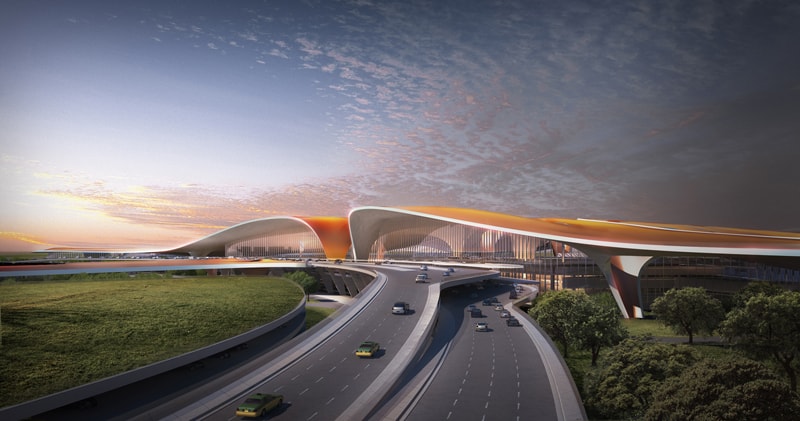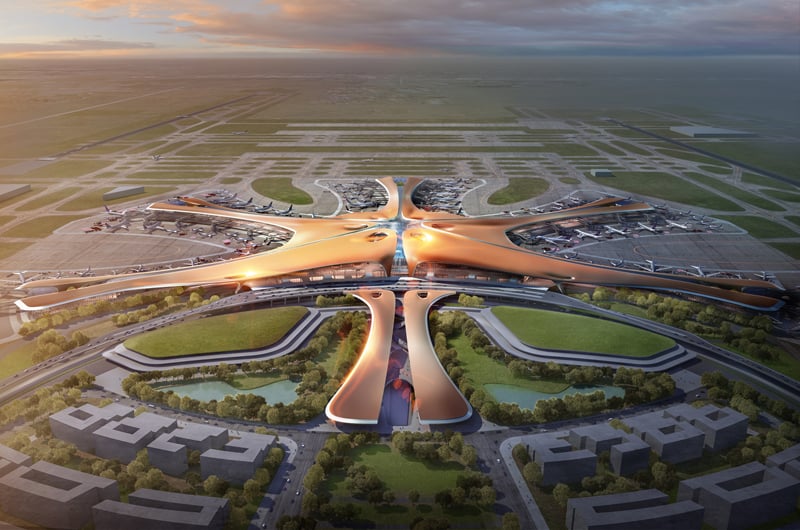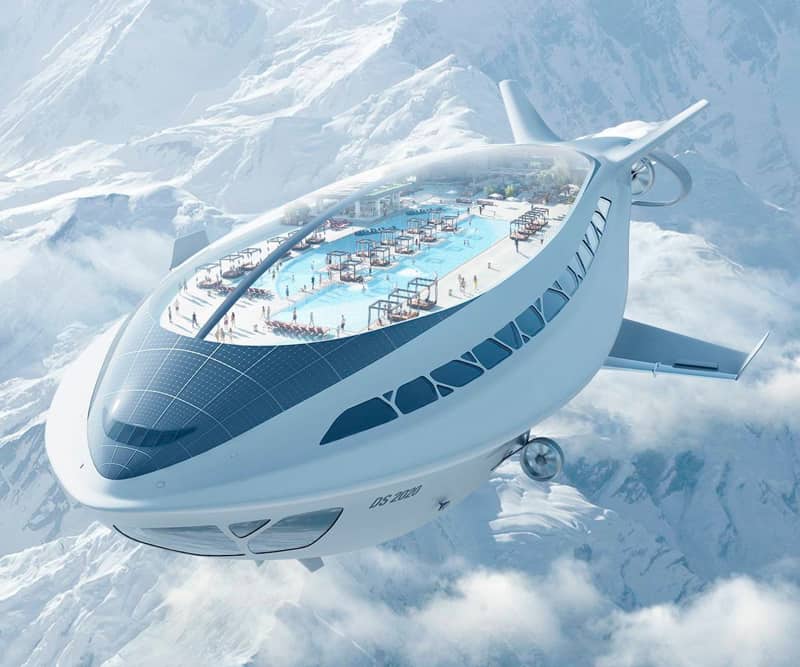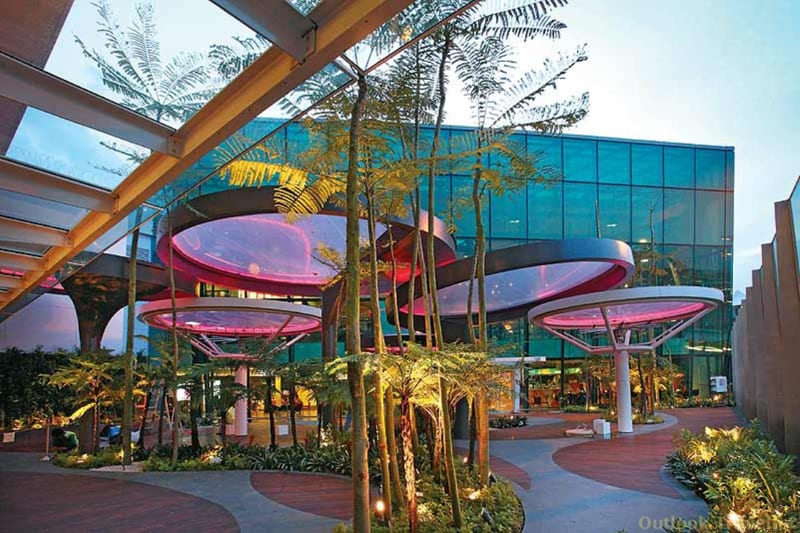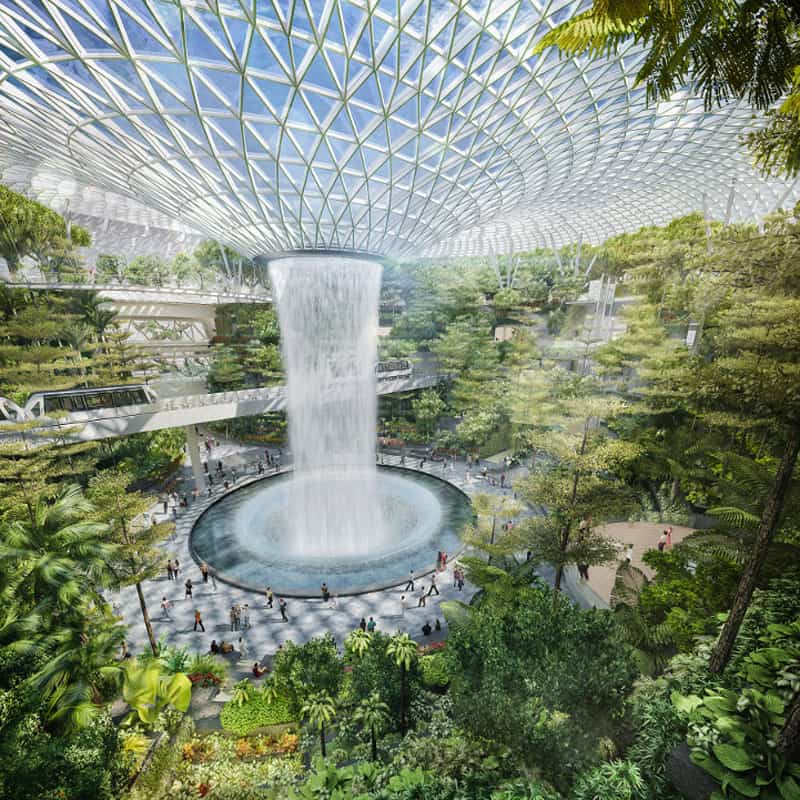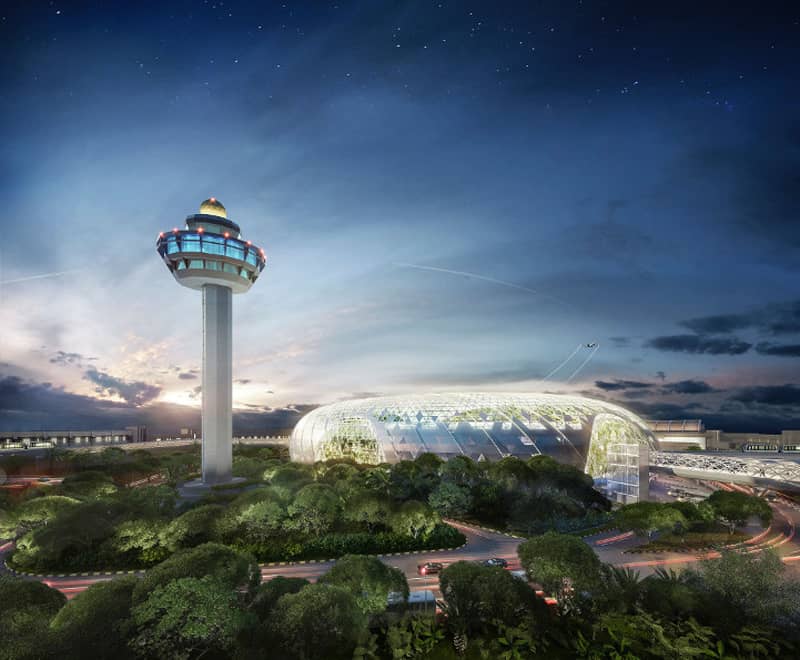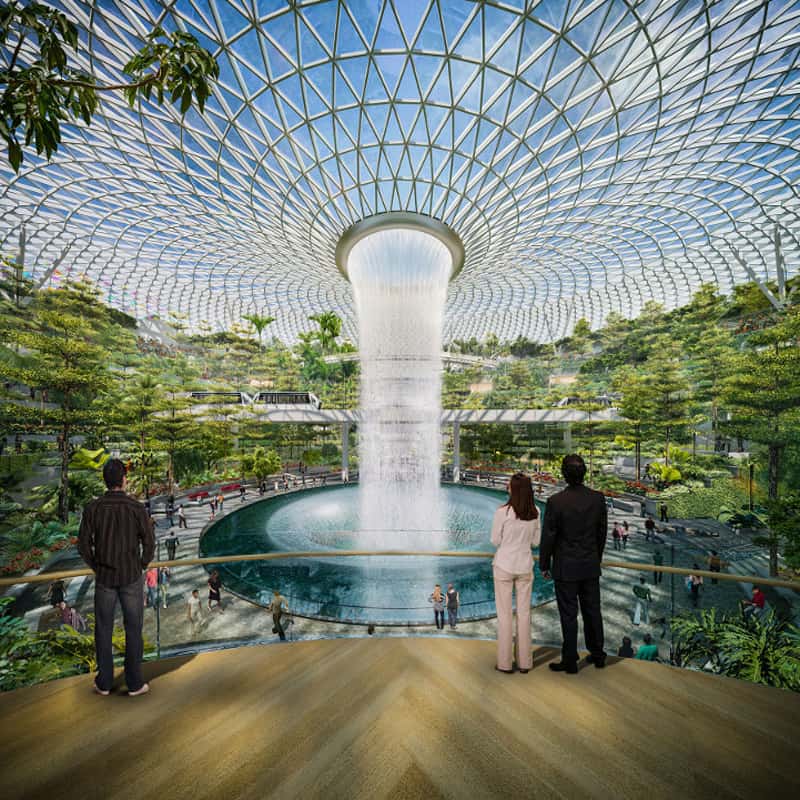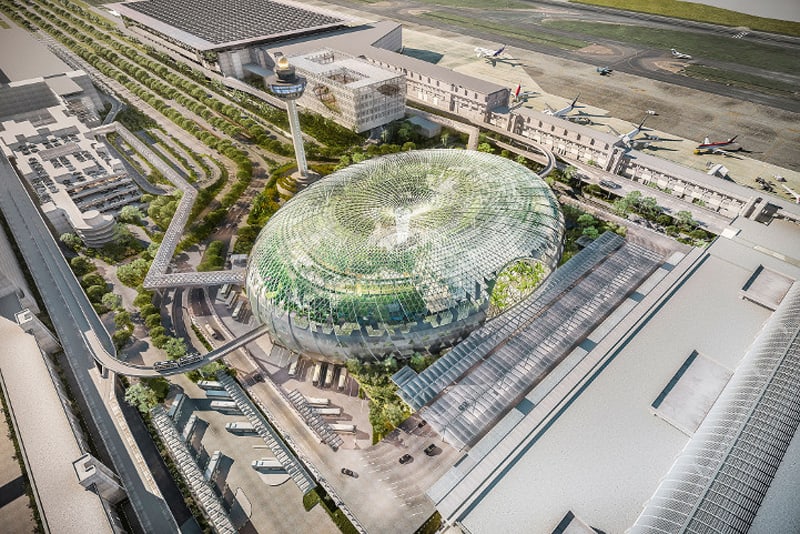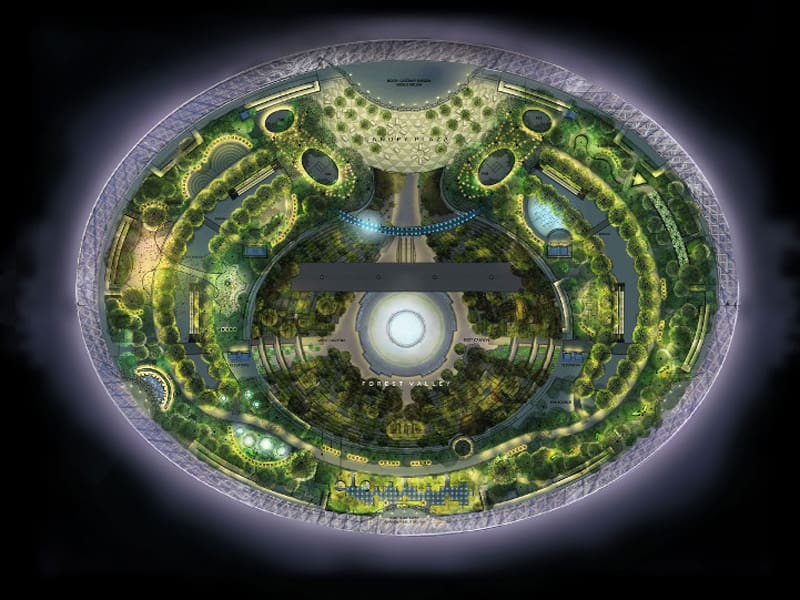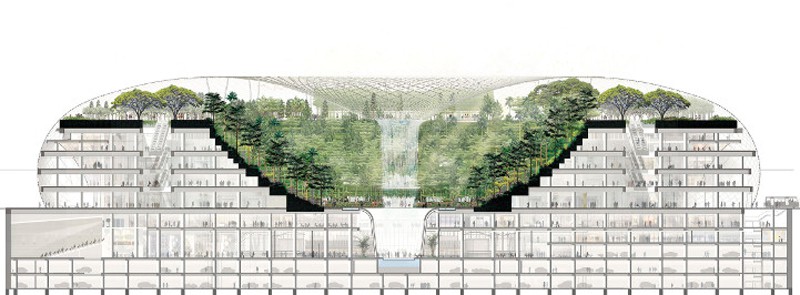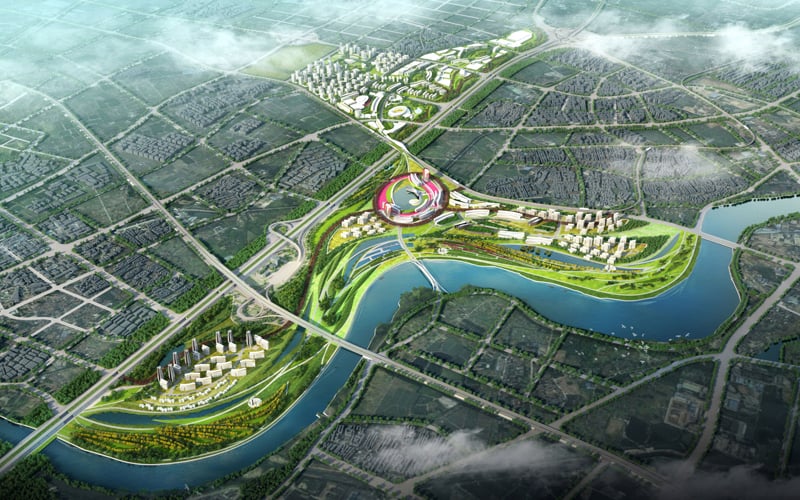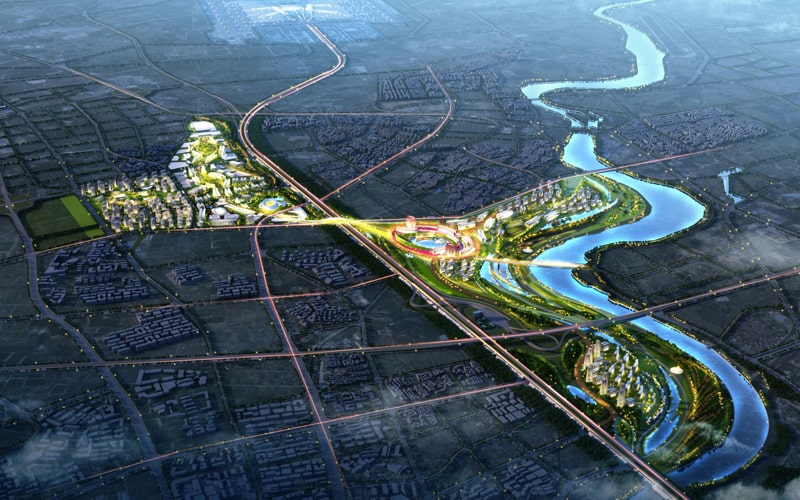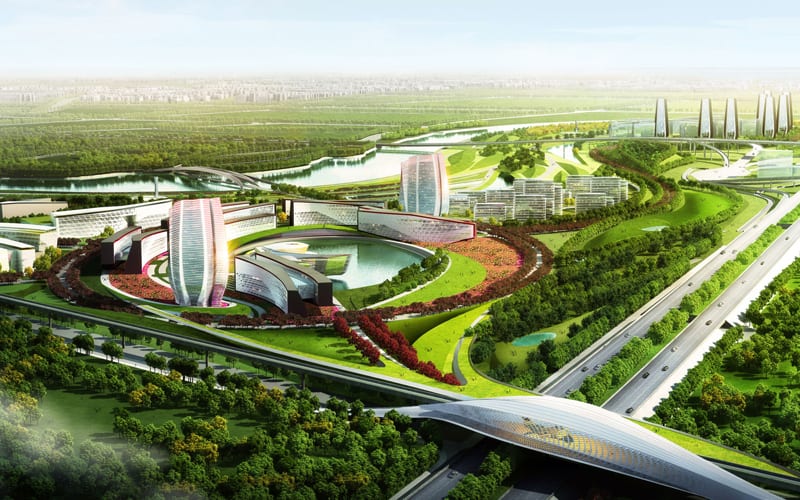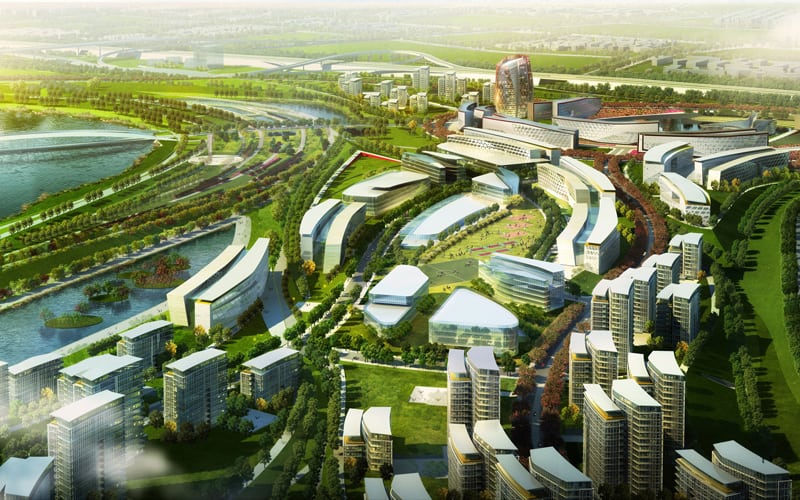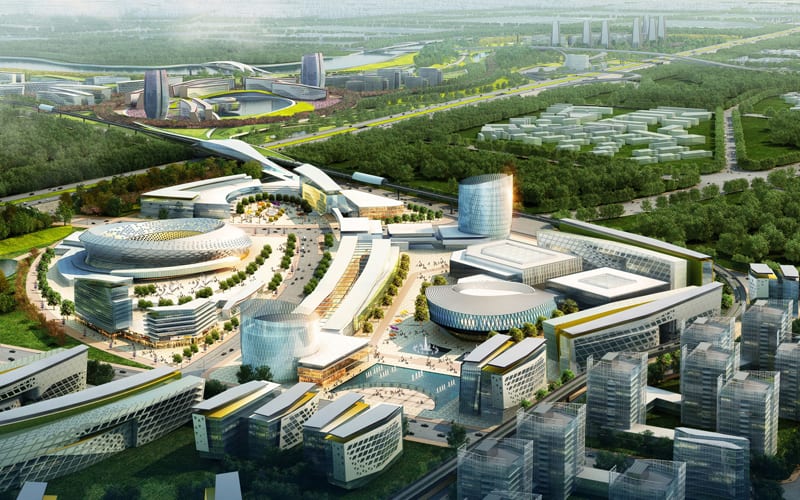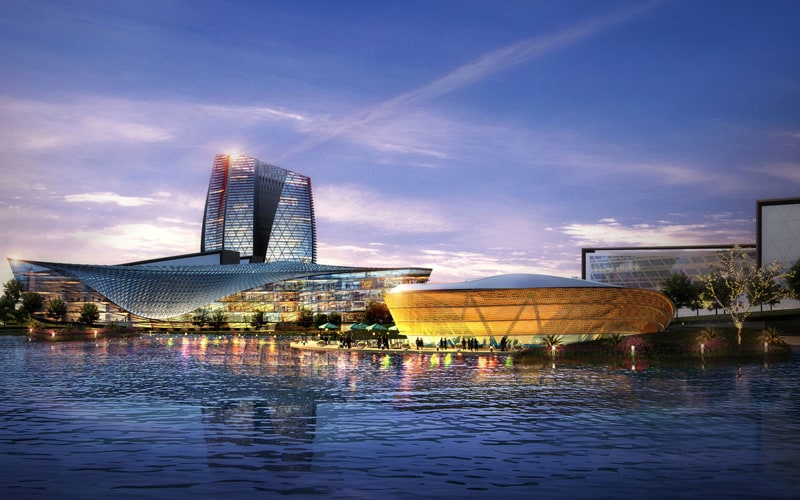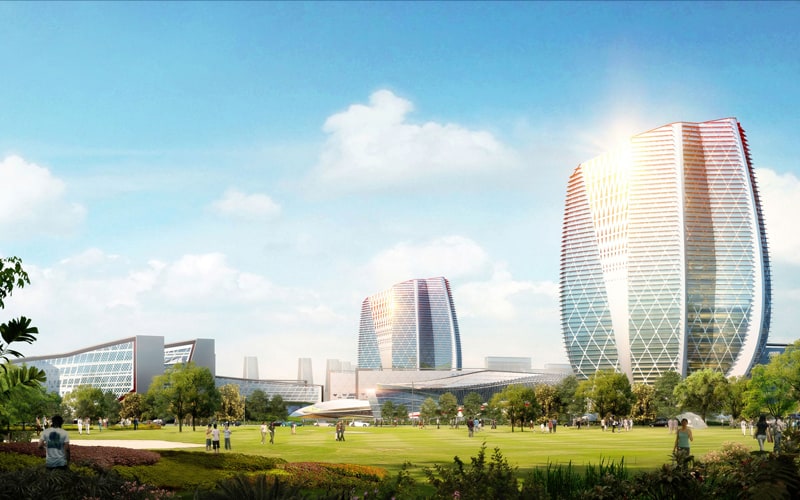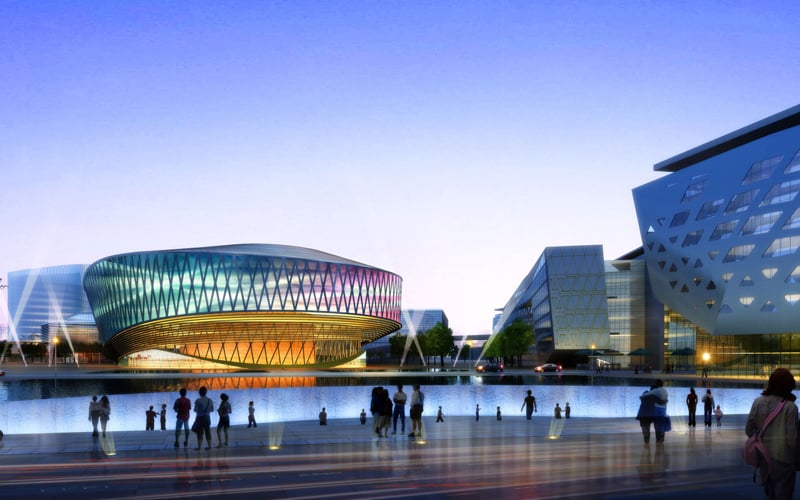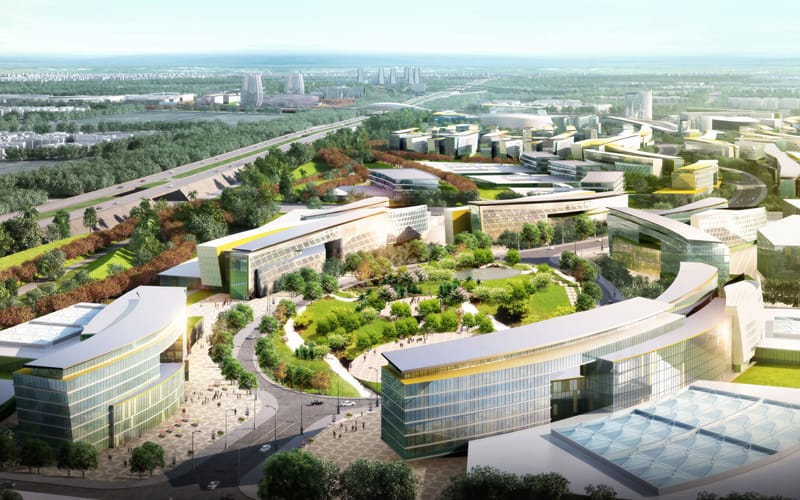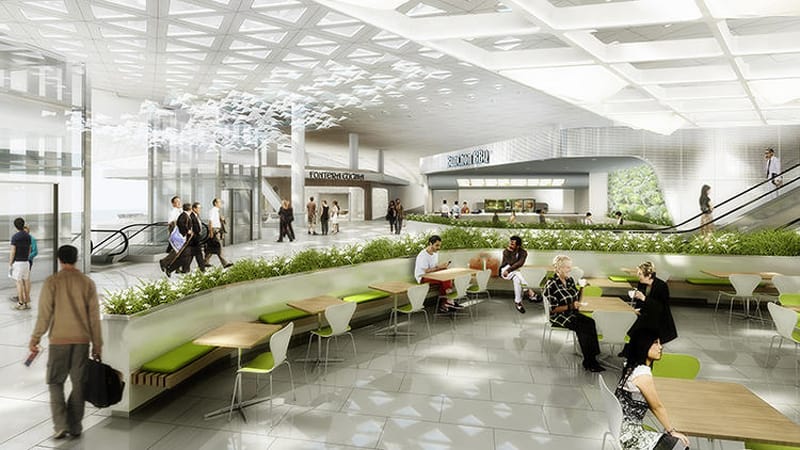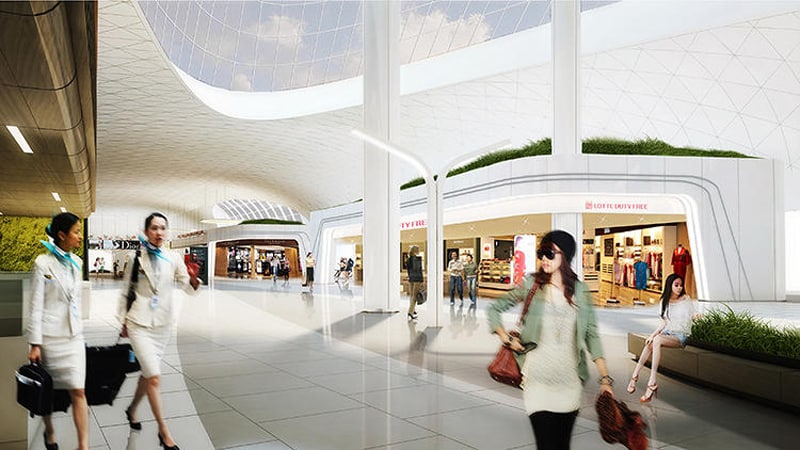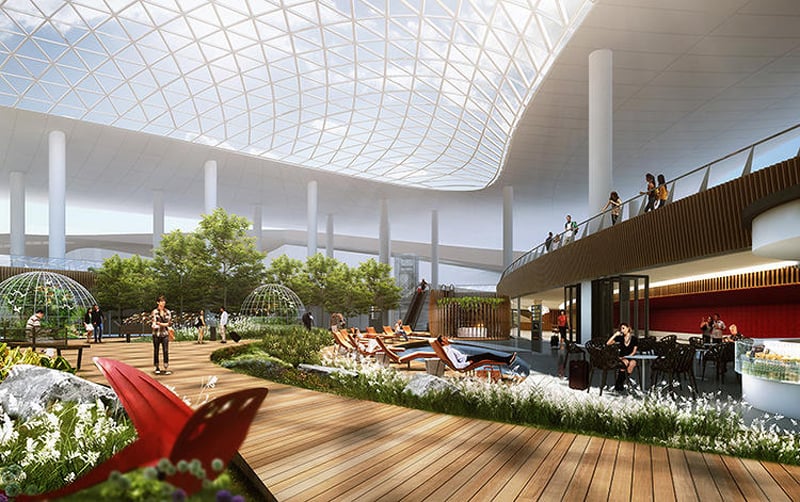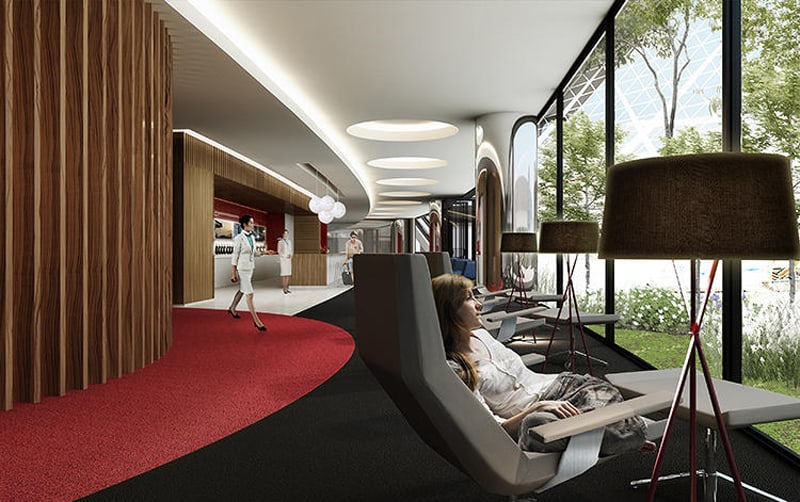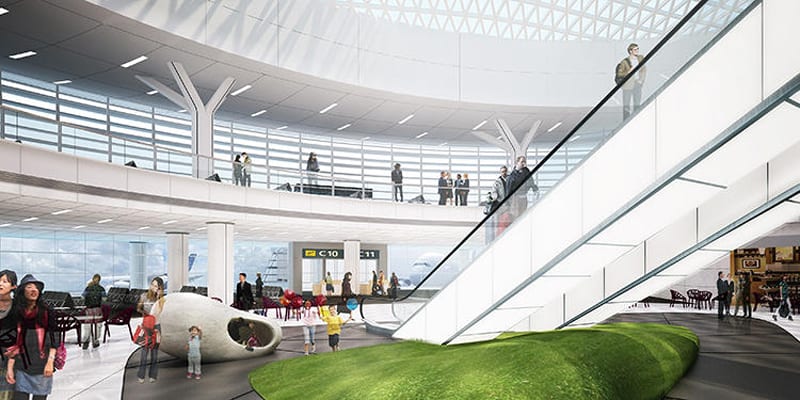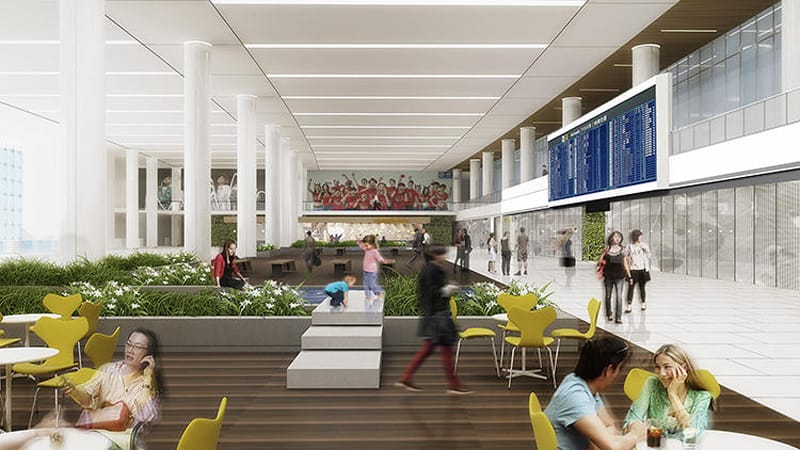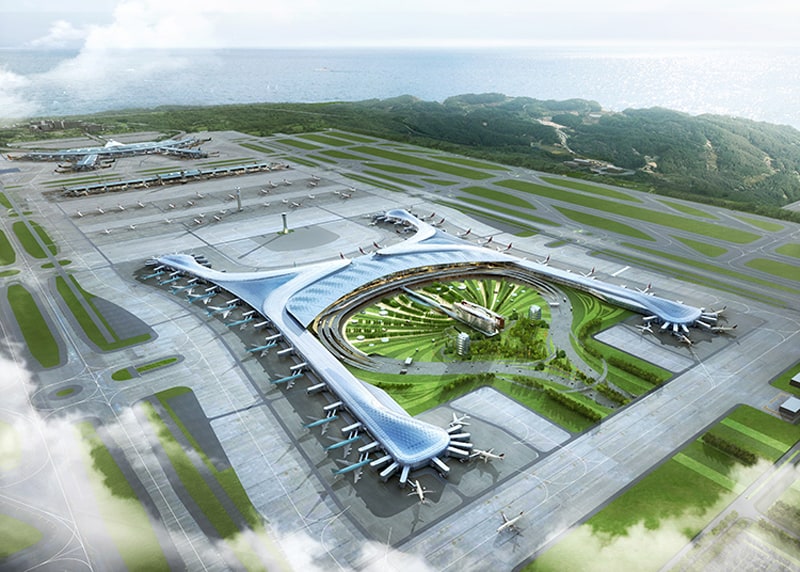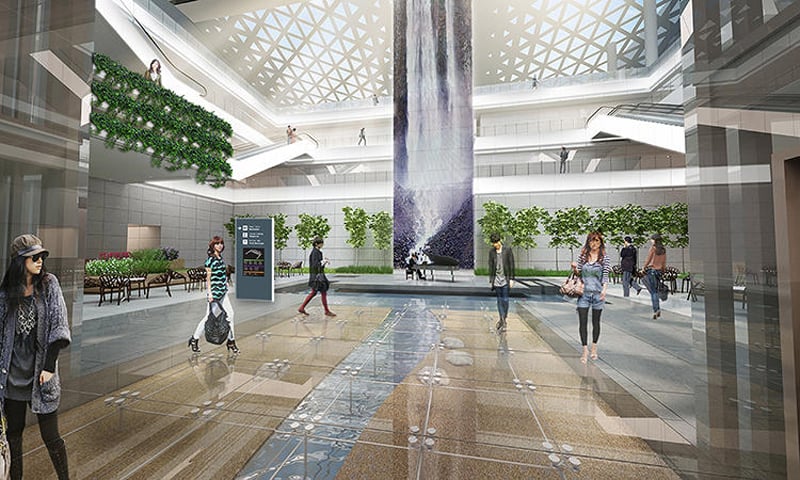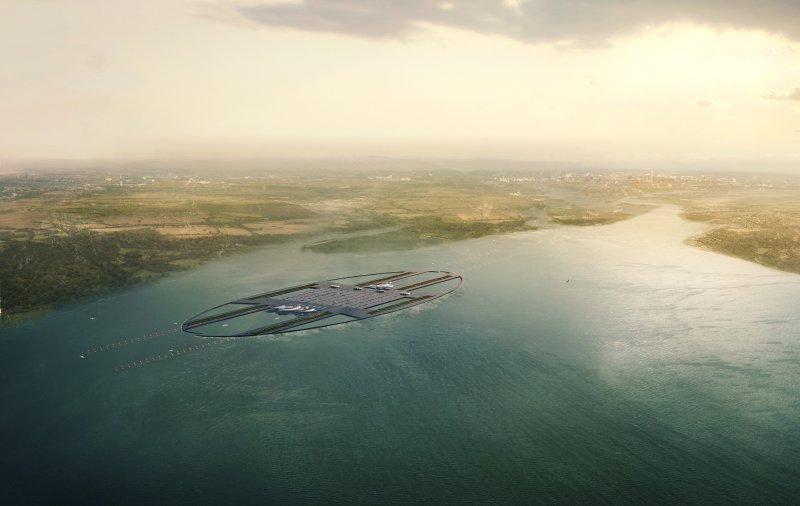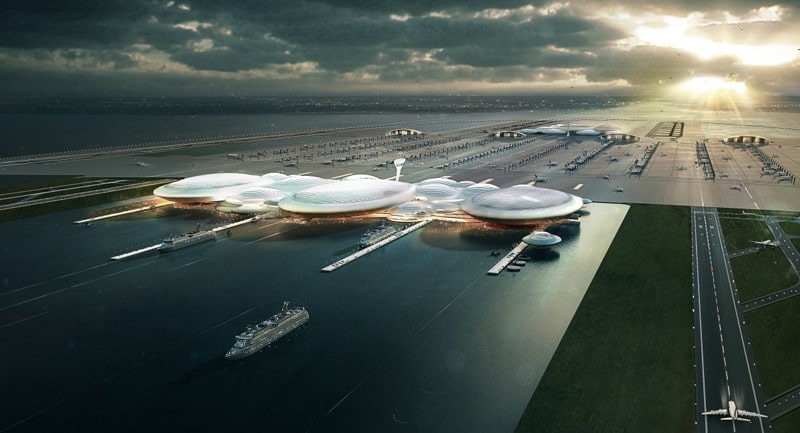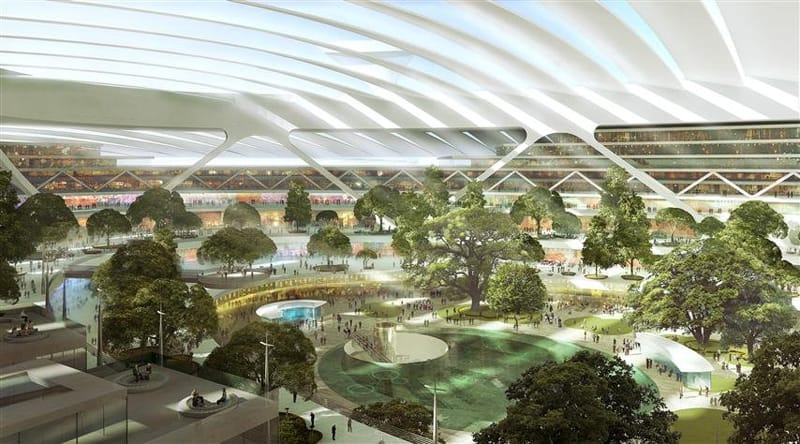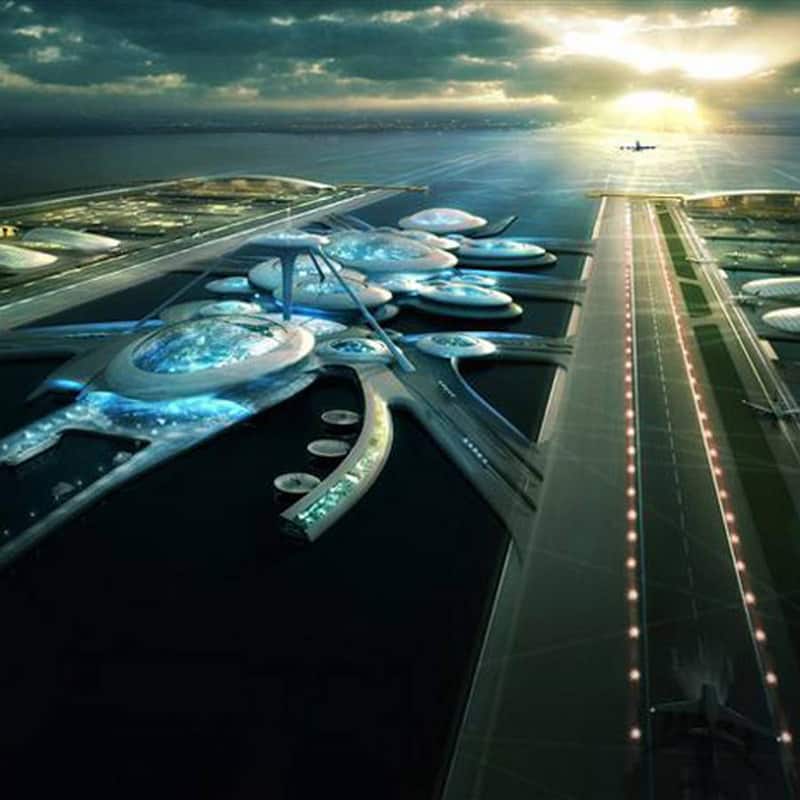How do you improve on the best airport in the world? More than 5 billion travelers passed through the airports of the world in 2015, according to Airports Council International. That’s an incredible number, considering the population of the entire planet is something like 7 billion. Long time ago we made an article about Top 10 Most Amazing Airport Lounges Around The Globe. For now, we will present you the latest trends for the airports of the future.
Airport owners and developers learned then that people—even the cost-conscious folks—will indulge themselves at the airport, allowing themselves extra time and, perhaps, a splurge item or two or three.
Today, more than a decade after 9/11, the same trend has resurfaced. This time, it’s fueled by travelers’ acceptance of security lines and the utility of “connectivity,” which allows people to simultaneously be at the office and at the airport dining on a splurge steak and glass of red wine before their flight, sans guilt. And indeed, with increasing fervor, airport owners and developers around the globe are reinventing the airport as a place that people actually want to spend time. That includes the “forevermore” kind of time.
The picture below is just an artist’s vision of how airports may look sometime in the future, but in recent years some proposed airport developments have been criticized as being unwanted or needed ‘marble palaces’ – but who can accurately determine where the dividing line between desire and necessity is drawn?
Beijing is a vital hub for travel both within China and internationally, and its current airport is already at full capacity. According to current flight regulations, it just can’t accommodate any more planes than already travel to and from the airport daily. Yet Chinese air travel is booming. The country’s airplane market is expected to become the world’s largest by 2030. That’s where the new airport, located in the southern Beijing suburb of Daxing, comes in.
From robots to facial recognition systems, airports are employing programs to provide efficient service to customers. According to www.wsj.com, the airport of the future will recognize you, greet you by name and know exactly where to put you.
The Airports Of The Future Could Become Hi-tech Pleasure Domes
Airports around the world are beginning to move in this direction. At London’s Gatwick Airport, beacons identify you by your smartphone and give GPS-like directions to your gate, pointing out food or shopping along the way. In Germany, robots at Düsseldorf’s airport park your car and return it curbside after you land, linking your itinerary to your license plate. Researchers are developing robots that will be able to check your bags and deliver them within minutes of landing.
The World’s Biggest Airport Terminal by Zaha Hadid Architects, Beijing
Zaha Hadid Architects, the firm charged with designing the new terminal along with French airport design firm ADPI, faces a major challenge: How do you keep a building that must accommodate 45 million passengers a year—and eventually up to 72 million annually—from overwhelming passengers? For Hadid’s designers, the answer lies in its structure: the shape of the airport, its roof, and how it’s divided.
The radial-shaped airport, which looks kind of like what happens when you stretch a blob of silly putty between your hands, will likely be the largest single-terminal airport building in the world when it opens around 2018. In 2025, a satellite terminal will add 4.5 million square feet of space. It’s estimated that it will cost a total $12.8 billion.
The next generation of a cruise ship. Would you go on it?
This is a futuristic air cruiseship imagined by Dassault Systèmes. It looks amazing.
Changi Airport in Singapore has a Balinese-themed swimming pool among its long list of amenities. In Hong Kong, the airport entertains. Consider the outdoor nine-hole golf course and 350-seat IMAX theater that claims the largest projection screen in Hong Kong.
This Incredible Urban Park Will Be Inside One Of The World’s Busiest Airports
This project redefines and reinvents what airports are all about. The airport facilities of the future are awesome to match, if not a little bit over the top.The airport of the future has a Waterfall, of course. The Jewel is a huge, 10-story complex in the middle of Singapore Changi Airport. The Jewel, to be built at the heart of Changi Airport and connected to Terminal 1 via an expanded Arrival hall and Terminals 2 and 3 by pedestrian bridges, is scheduled for completion by late 2018. When completed, its central “Forest Valley” will woo travelers with tiers and tiers of “verdant” plants, waterfalls, ponds and terraces that surround luxury shops and fine dining restaurants.
Construction has just begun on architect Moshe Safdie’s lush, expansive greenhouse space at Singapore’s principal airport. Measuring over 1.4 million square feet, the garden space, known as Jewel Changi Airport, will feature winding nature trails as well as recreation and dining areas. At the center of the expansive glass dome that encloses the garden is a spout pouring a roaring 131-foot-tall waterfall called the “Rain Vortex.” The waterfall’s output is recycled for use throughout the building, and the cascading stream is lit up at night.
China Southern Airport City
Planning for the land not in spite of it, China Southern Airport City will revolutionize the concept of master planning. This one of a kind airport city designed by Woods Bagot includes not only the headquarters for airline China Southern but also all the infrastructure needed in order to foster and grow their ever expanding business. The master plan organizes the neighborhoods into three precincts. Business, cultural, and entertainment uses as well as Southern Airlines University define the central precinct, creating a distinct heart that bridges the highway. Derived from the natural layout of the intended site as well as Chinese tradition the masterplan uses the natural bend in the Lui Xe River in order to help determine a defined centre point for the project, a grand ‘ring’ as seen from above. The China Southern Headquarters is the central heart of the ring, which radiates the spirit of life towards the west and east sites.
South Korea’s New Sustainable City Inside An Airport
The first thing to understand about this South Korea airport is that it’s not in any way comparable to an American airport. It is a behemoth, like many airports in Asia. “We were dealing with one million square feet as a starting point, and getting two million square feet in the U.S. is pretty extraordinary,” says Keith Thompson, a principal at Gensler. People apparently love giant airports; for the past eight years, Incheon has been selected as the best airport in the world by the Airports Council International.
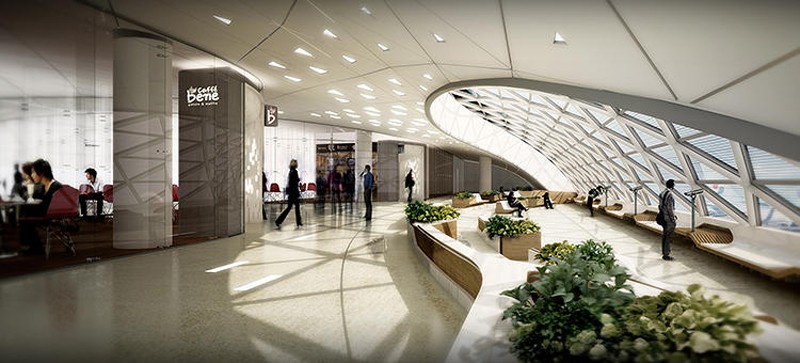
Integrating sustainable elements into Incheon wasn’t easy. Unlike office buildings, airports energy intensive for 24 hours a day, they have large floor areas, they’re sprawling, and windows generally can’t open. An airport the size of Incheon also produces as much trash as a city.
New vision for floating airport positions London for future challenges
The proposed airport would float on the waters of the Thames Estuary, minimizing disruption to London residents, affording the capital an opportunity to expand beyond its land-locked airports, and offering global travellers a European hub airport able to operate around-the-clock. “To match the immense demands to come on the UK’s outdated airport infrastructure, we must take a completely new approach.”
The proposed vision comes at a time when skies across the world are becoming increasingly overcrowded. In Europe, at least 7,000 additional commercial jets will be flying the skies by 2030, according to Eurocontrol. Figures from the UK’s Department of Transport indicate that if capacity could be provided in the southeast of England passengers numbers could increase from 127 to 300 million per annum by 2030.
The proposed airport would generate power from marine turbines situated along the floating runways, harnessing wave energy to offset airport energy use. A floating airport would provide a reef-like environment conducive to marine life. To minimize environmental disruption, runways would be tethered to the seabed and the floating concourse. [ more info here]

